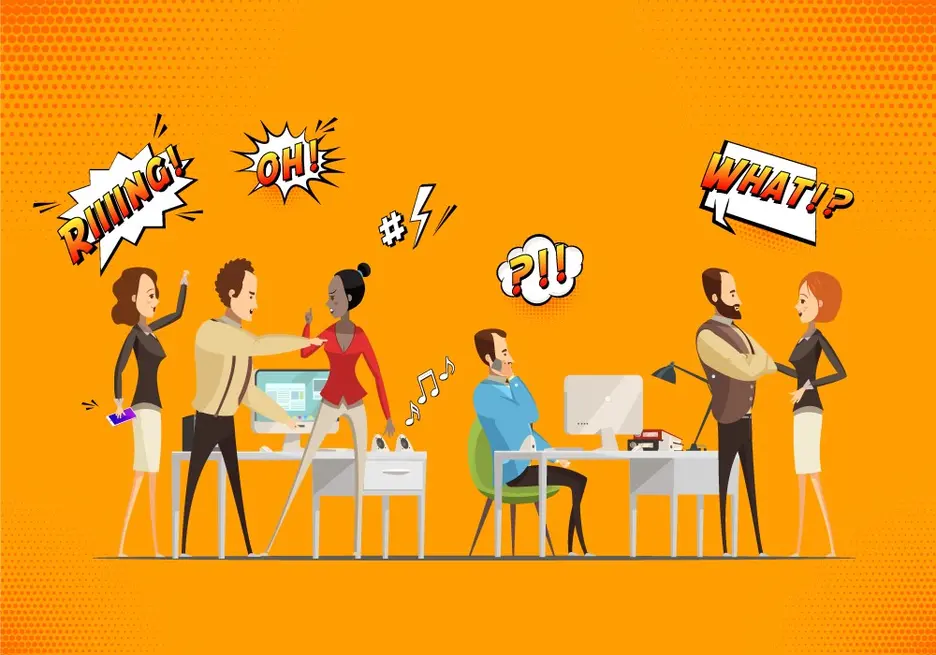Noise: the Invisible Pollutant

When we think about pollution, the first thing that comes to mind is atmospheric smog or perhaps the image of a body of water affected by industrial waste. I’d bet that if we conducted a survey, a minuscule percentage would mention noise as a source of pollution. For a long time I was among this majority unaware of the problem, until the day when for the first time in decades I decided to get a hearing test: to my surprise I found that I had a percentage hearing loss in my left ear.
Like me, there are millions of people in the world who are unknowingly exposed to noise pollution and are silently losing their hearing. Prolonged exposure to sounds at 85 decibels or higher may cause hearing loss: the louder the sound, the more rapid the loss of hearing.
For example, 85 decibels is equal to the sound of heavy traffic in a city. A music player at its loudest, on the other hand, produces noise levels of 105 decibels. I wonder how many times I had my earphones at maximum volume or how often did I go dancing at discotheques without knowing the harm I was slowly doing to myself?
Noise: silent disease
According to the United State National Center for Environmental Health (NCEH), approximately 40 million adults between the ages of 20 and 69 have hearing loss caused by noise. Deafness, as it is commonly known, is a stealthy and irreversible disease but it can be prevented if the population is aware of the risks to which it is exposed.
Some of the recommendations provided by U.S. health agencies on how to prevent hearing loss include:
- Know the sounds that can cause us harm (85 decibels or more);
- Use ear plugs and other protective devices when we engage in activities where there is noise pollution;
- Protect the ears of children who are too young to protect themselves;
- Inform your family, friends and colleagues about the dangers of noise;
- Get a hearing test if you suspect you’ve had hearing loss.
Noise pollution in the workplace
Have you ever asked yourself why people who work on the runways at airports use earmuffs or helmets to protect their ears? The noise level of modern airplanes during take-off is approximately 130-140 decibels; someone working full time could see their hearing irreversibly affected if they don’t use the right personal protective gear.
Industrial noise, although inevitable in many cases, can also be prevented and mitigated so that its impact is limited. The World Bank’s general environmental, health and safety guidelines define maximum noise levels according to different points of reception (residential, industrial, commercial), as well as methods to prevent and control the sources of noise emissions. These guidelines also establish the noise limits beyond which employees should use hearing protectors, and the need for companies to coordinate medical checkups for workers exposed to high noise levels to test their hearing ability.
IDB Invest, the private sector institution of the Inter-American Development Bank (IDB) Group, finances companies and projects that are sustainable, not only in environmental terms but also in terms of employees and the surrounding community. For this reason, at IDB Invest we are very serious about complying with the Performance Standards on Environmental and Social Sustainability, various aspects of which cover the problem of noise pollution.
Awareness regarding a real problem
On April 24 we celebrate International Noise Awareness Day. This campaign was created in 1996 by the Center for Hearing and Communication (CHC) and is organized every year to raise people’s awareness regarding this environmental pollutant, hearing conservation, and the problems and damages caused by noise.
It’s been six years since I had the test that revealed the existence of noise pollution in my body and the effects it had had on my health. Today I am more aware than ever of the importance of prevention and of building the world’s awareness of this problem. At the professional level, I strive to ensure that all our projects comply with the Performance Standards and the General Guidelines on issues of noise; at the personal level, I provide an example to my family, speaking to them about the problems of noise and getting repeat hearing tests.
And you, did you already get your hearing test?■
LIKE WHAT YOU JUST READ?
Subscribe to our mailing list to stay informed on the latest IDB Invest news, blog posts, upcoming events, and to learn more about specific areas of interest.
Subscribe


